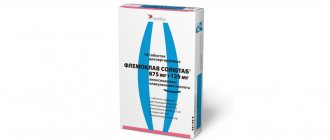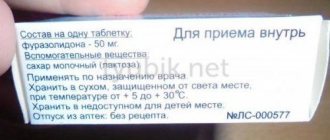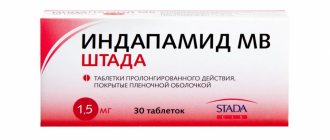What is the popularity of "Eufillin" based on?
One of the medications often prescribed for swelling is Eufillin. Its effect is based on the expansion of blood vessels and activation of the removal of waste fluid through the kidneys. "Eufillin" simultaneously activates brain function, facilitates breathing and slightly lowers blood pressure.
Swelling during pregnancy
This drug is not a weak drug, so it is usually prescribed in several short courses, sometimes one course is enough. Relief is felt literally from the first day of use: swelling subsides, blood pressure normalizes, and the woman feels better. On the advice of a doctor, it can be combined with bioactive supplements so that the mineral balance in the body is not disturbed.
There are cases when a long course of Euphyllin is prescribed. However, a pregnant woman should not take it continuously for more than a month. Just as you should not do injections of “Eufillin”, which provoke dizziness and palpitations.
Use during pregnancy and breastfeeding
Theophylline penetrates the placental barrier. The use of aminophylline during pregnancy may result in potentially dangerous concentrations of theophylline and caffeine in the blood plasma of the newborn. Newborns whose mothers received aminophylline during pregnancy (especially in the third trimester) require medical supervision to monitor possible symptoms of theophylline intoxication.
Theophylline is excreted in breast milk. When using aminophylline in a nursing mother during lactation, irritability may occur in the child.
Thus, the use of aminophylline during pregnancy and lactation (breastfeeding) is possible in cases where the expected benefit of therapy for the mother outweighs the potential risk for the fetus or child.
Is it possible to take Eufillin on your own?
Even for pregnant women with bronchial asthma, it is better to replace Euphyllin tablets with non-hormonal topical drugs (aerosols) during this period. For those who have had vegetative-vascular dystonia, tachycardia and other problems with the cardiovascular system or are allergic to caffeine-containing drugs in the past or have experienced pregnancy during pregnancy, Eufillin is categorically contraindicated. The doctor will select another drug that promotes increased urine output, but does not affect the activity of the heart and blood vessels.
You should not prescribe Eufillin yourself. This drug, we repeat once again, is quite potent. Visit a doctor, check your blood pressure, take a urine test - and then you will be prescribed treatment appropriate to your condition, perhaps much easier.
EUPHYLLINE
EUPHYLLINE
(
Euphyllinum
; synonym:
Aminocardol, Aminophyllinum, Dia-phyllin, Genophyllin, Methaphyllin, Neophyllin, Novphyllin, Synthophyllin, Theophyllamin, Theophylline ethylendiamine,
etc.; GPC, list B) is an antispasmodic. It is a mixture of 80% theophylline (1,3-dimethylxanthine) with 20% ethylenediamine; C7H8N4O2 + C2H8N2:
White or white with a yellowish tint crystalline powder with a faint odor of ammonia, soluble in water; The pH of the aqueous solution is 9.0–9.7.
It has a myotropic antispasmodic effect on smooth muscles, a stimulating effect on the myocardium and the central nervous system, and also causes a diuretic effect. The pharmacological properties of aminophylline are determined by theophylline included in its composition (see). Ethylenediamine contained in aminophylline increases the solubility of the drug in water (about 20 times compared to theophylline). Eufillin relaxes the smooth muscles of the bronchi and blood vessels, eliminating bronchospasms; reduces coronary vascular resistance (increases coronary blood flow); reduces pressure in the pulmonary artery and dilates peripheral blood vessels. Aminophylline usually constricts cerebral vessels, reducing blood flow; however, with spasms of cerebral vessels, aminophylline can expand them. Eufillin strengthens and increases heart contractions, shortening systole and increasing stroke and minute volume. Myocardial oxygen consumption increases significantly. It is possible that under the action of aminophylline, the coronary vessels dilate to a large extent in response to stimulation of cardiac activity. Eufillin increases venous return of blood to the heart, so cardiac output increases at the height of aminophylline action. Eufillin has a stimulating effect on the central nervous system, similar to the effect of caffeine (see). Due to stimulation of the centers of the vagus nerves, aminophylline in small doses can cause bradycardia. The diuretic effect of aminophylline is associated mainly with the inhibition of reabsorption processes (in particular, Na+ and Cl- ions) in the renal tubules. In addition, aminophylline increases glomerular filtration by increasing renal blood flow. Eufillin inhibits platelet aggregation, inhibits the secretion of histamine by mast cells, enhances the effect of adrenaline and glucagon, and facilitates neuromuscular transmission. Eufillin stimulates the release of adrenaline and norepinephrine from chromaffin cells of the adrenal medulla and other tissues (activates tyrosine hydroxylase and increases the content of dopamine in the adrenal glands). At the same time, urinary excretion of catecholamines and their metabolites increases. It is possible that the bronchodilator effect is partly due to the action of adrenaline released from the adrenal glands under the influence of aminophylline. In recent years, there has been a hypothesis that the mechanism of action of aminophylline and other methylxanthines is associated with inhibition of adenosine receptors. This is confirmed by the fact that aminophylline is an adenosine antagonist in its effect on the central nervous system, heart rate, renal blood flow, and the release of adrenaline and histamine. In addition, aminophylline blocks cAMP phosphodiesterase, increasing the content of intracellular cAMP, promotes the release of intracellular calcium from the sarcoplasmic reticulum, and weakens the effect of prostaglandins. However, these effects are typical only for aminophylline in high doses.
Eufillin is well absorbed from the gastrointestinal tract both when administered orally and when administered rectally. The bioavailability of aminophylline in these cases is about 90%; the maximum concentration in the blood is reached after 2 hours, the duration of action is about 6 hours. The half-life of aminophylline in adults is 8-9 hours, and in children - 3-4 hours. Theophylline, which is part of aminophylline, is approximately 50% bound to blood plasma proteins. Eufillin penetrates well through tissue barriers, in particular through the placental barrier. Up to 90% of aminophylline is metabolized in the liver by oxidation and N-demethylation under the influence of microsomal liver enzymes. The following main metabolites of aminophylline are found in urine: 1,3-dimethyluric acid (40-50%), 3-methylxanthine (15-30%), which has the same properties as aminophylline, but is approximately 2 times less active, 1 -methyluric acid (10%) and small amounts of 1-methylxanthine. Aminophylline is excreted by the kidneys mainly in the form of metabolites and partly in the form of unchanged theophylline (10%).
Eufillin is used
for the relief and prevention of attacks of bronchial asthma, for the relief of status asthmaticus, in the treatment of bronchitis, which is accompanied by an increase in bronchial tone, as well as in cardiac asthma (especially when combined with bronchospasm), pulmonary embolism, pulmonary infarction, cerebral vascular crises, to reduce intracranial pressure in case of cerebral edema during strokes, in the treatment of vasospasm of the retina.
Assign
orally 0.15 g 2-3 times a day, usually starting with a daily dose of 0.45 g and gradually increasing it to 0.9 g. If necessary, administer intravenously 5-10 ml of a 2.4% solution with 10-20 ml of 20% or 40% glucose solution. For intravenous drip administration, 0.24-0.48 g of aminophylline is dissolved in 500 ml of 5% glucose solution. Sometimes aminophylline is administered intramuscularly or rectally (in microenemas of 0.3-0.5 g in 20-25 ml of warm water). Aminophylline is not injected under the skin due to its irritating effect. Children under 14 years of age should not be administered intravenous aminophylline due to the possible development of vascular collapse.
Higher doses for adults orally, intramuscularly and rectally: single - 0.5 g, daily - 1.5 g; into a vein: single dose - 0.25 g, daily - 0.5 g.
Side effect
aminophylline may be manifested by nausea and vomiting (especially when administered orally on an empty stomach). However, these phenomena can also occur with parenteral administration of aminophylline due to stimulation of the vomiting center. Dizziness, headache, irritability, nervousness, anxiety, insomnia, tremor, paresthesia, palpitations, decreased blood pressure (especially with intravenous administration), increased urge to urinate, allergic reactions (urticaria, itching, thrombocytopenia, etc.) are also possible. Against the background of fluorotane anesthesia, aminophylline causes cardiac arrhythmias. When administered intramuscularly, aminophylline causes prolonged pain at the injection site, and when administered rectally, irritation of the rectal mucosa occurs. With an overdose of aminophylline, cardiac arrhythmias appear (mainly ventricular extrasystoles, tachycardia); in severe poisoning, muscle twitching and epileptiform or tonic convulsions are observed. Convulsions caused by aminophylline are often not relieved by conventional anticonvulsants. Severe aminophylline poisoning is accompanied by confusion, delirium, and fever. Death occurs from paralysis of the respiratory center and cardiovascular failure. In case of aminophylline poisoning when taking the drug orally, gastric lavage is carried out in the early stages, since at a later stage, gastric lavage can provoke convulsive reactions. In case of vascular collapse, blood replacement fluids are administered. Adrenaline or ephedrine are not used in such cases due to the risk of increasing the cardiotoxicity of aminophylline. If seizures develop, diazepam is administered intravenously. In case of aminophylline poisoning, detoxification hemosorption or hemodialysis is used to reduce its concentration in the blood (see). The clearance of aminophylline is reduced in liver diseases (especially cirrhosis), heart failure, cor pulmonale, pulmonary edema, with low protein and high carbohydrate content in food, when erythromycin, cimetidine, allopurinol, oral contraceptives are prescribed with aminophylline simultaneously, as well as in over 60 years old. However, in smokers and when taking phenobarbital and diphenine, the clearance of aminophylline increases. In children 3-10 years of age, aminophylline clearance is higher than in adults.
Contraindications
to the use of aminophylline are hypotension, paroxysmal tachycardia and extrasystole, heart failure, myocardial infarction.
Release form:
powder, tablets 0.15 g; ampoules of 1 ml of 24% solution (for intramuscular injection) and 10 ml of 2.4% solution (for intravenous injection). Storage: in a well-closed container, protected from light.
Bibliography:
Mashkovsky M.D. Medicines, vol. 1, p. 457, M., 1984; The pharmacological basis of therapeutics, ed. by A.G. Gilman a. o., NY, 1980; Stirt JA a. SullivanS. F. Aminophylline, Anesth. Analg. Curr. Res., y. 60, p. 587, 1981.
V. V. Maisky.
How can a pregnant woman feel when taking Eufillin?
Let's divide the symptoms into two groups.
The first is non-dangerous sensations: irritability, worsening sleep, a slight increase in breathing, immediately after taking it - trembling of the hands, which disappears within half an hour. The dose of the drug is reduced and the administration is continued.
The second is indications for discontinuation of the drug: headache, dizziness, decreased blood pressure, palpitations, poor coordination of movements, intestinal upset, vomiting. Consult your doctor and get a different drug from him.
Headache
Indications
For parenteral use: status asthmaticus (additional therapy), neonatal apnea, ischemic cerebrovascular accident (as part of combination therapy), left ventricular failure with bronchospasm and Cheyne-Stokes type breathing disorder, edematous syndrome of renal origin (as part of complex therapy) ; acute and chronic heart failure (as part of combination therapy).
For oral administration: broncho-obstructive syndrome of various origins (including bronchial asthma, COPD, including emphysema, chronic obstructive bronchitis), hypertension in the pulmonary circulation, cor pulmonale, sleep apnea; acute and chronic heart failure (as part of combination therapy).
How to take Eufillin correctly
To prevent Eufillin from damaging the mucous membranes of the stomach and intestines, it should never be taken on an empty stomach. The best option is to drink it with a full glass of water one to two hours after eating. The drug should not be taken closer to night to avoid sleep disturbances.
If the drug is taken correctly and does not give any side effects, it greatly helps a pregnant woman: swelling decreases, oxygen supply to the fetus increases, and the likelihood of developing any complications during childbirth becomes quite low.
If your doctor has recommended Eufillin, start taking the drug with small doses. Do not stop taking your medication yourself; your doctor will immediately prescribe a replacement drug. Consult a doctor, take dietary supplements, and Eufillin will help you avoid late toxicosis.
MAKE AN APPOINTMENT
Abortion and contraception clinic in St. Petersburg - department of the medical gynecological association "Diana"
Make an appointment, tests or ultrasound via the contact form or by calling +8 (812) 62-962-77. We work seven days a week from 09:00 to 21:00.
We are located in the Krasnogvardeisky district, next to the Novocherkasskaya, Ploshchad Alexander Nevsky and Ladozhskaya metro stations.
The cost of a medical abortion in our clinic is 3,300 rubles. The price includes all pills, an examination by a gynecologist and an ultrasound to determine the timing of pregnancy.
Share link:
special instructions
Use with caution in severe coronary insufficiency (acute phase of myocardial infarction, angina pectoris), widespread atherosclerosis, hypertrophic obstructive cardiomyopathy, frequent ventricular extrasystoles, increased convulsive readiness, liver and/or renal failure, gastric and duodenal ulcers (history), with recent bleeding from the gastrointestinal tract, uncontrolled hypothyroidism (possibility of cumulation) or thyrotoxicosis, with prolonged hyperthermia, gastroesophageal reflux, prostatic hypertrophy, in elderly patients, in children (especially orally).
Correction of the aminophylline dosage regimen may be required for heart failure, liver dysfunction, chronic alcoholism, fever, and acute respiratory infections.
In elderly patients, a dose reduction may be required.
When replacing the used dosage form of aminophylline with another, clinical observation and monitoring of the concentration of theophylline in the blood plasma is necessary.
Aminophylline is not used simultaneously with other xanthine derivatives. During the treatment period, you should avoid eating foods containing xanthine derivatives (strong coffee, tea).
Use with caution simultaneously with anticoagulants, with other theophylline or purine derivatives.
Concomitant use with beta-blockers should be avoided.
Aminophylline should not be used simultaneously with glucose solution.
Do not use rectally in children.




